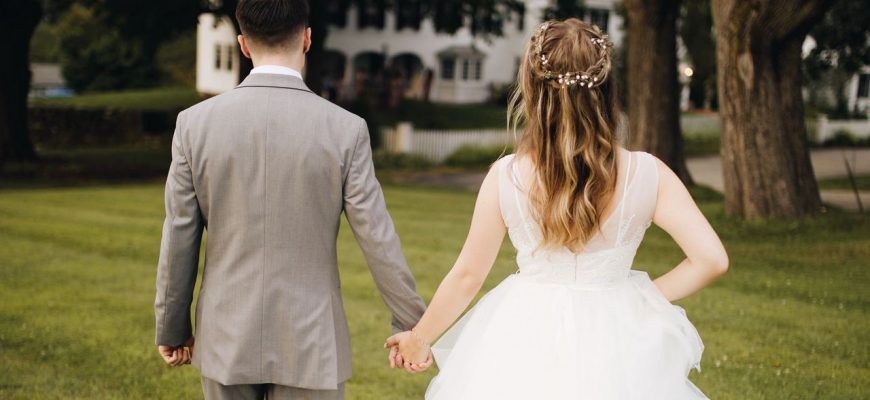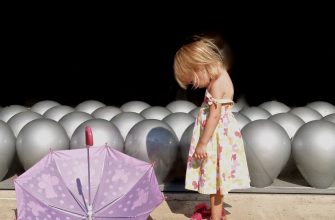The Bolshoi Theater
Сочинение на тему «Большой театр»
на английском языке с переводом на русский язык
The Bolshoi Theater
Большой театр
In all countries, theaters are the main symbols of art, centers of national culture. Such academic theaters as The Royal Opera House in London or La Scala in Milan are famous all over the world. Every visit to them opens an incredible beauty to the spectators and listeners. Of course, The Bolshoi Theater in Moscow is among these temples of art.
Во всех странах театры – это главные символы искусства, центры национальной культуры. Такие академические театры, как Королевский театр в Лондоне или Ла Скала в Милане, знамениты во всём мире. Каждый визит в них открывает зрителям и слушателям невероятную красоту. Конечно, Большой театр в Москве – среди этих храмов искусства.
Russian opera and classical ballet are thought to be examples of the aesthetic perfection. The Bolshoi Theater is their “heart”, the greatest theater in the country. It is possible to see there the best stage performances of musical works by Russian and foreign composers, musicians, and choreographers.
Российские опера и классический балет считаются образцами эстетического совершенства. Большой театр – их «сердце», величайший театр страны. Там можно увидеть лучшие сценические постановки музыкальных произведений русских и зарубежных композиторов, музыкантов и хореографов.
The magnificent building of the theater with white columns can impress everyone, as well as its halls with red seats, golden boxes, and huge stages. The building is a part of the Theater Square architectural ensemble.
Великолепное здание театра с белыми колоннами способно впечатлить любого, как и его залы с красными креслами, золотыми ложами и огромными сценами. Здание является частью архитектурного ансамбля Театральной площади.
The modern audience loves The Bolshoi Theater, but it has a long artistic tradition. It was founded in the 18 th century, by the order of the Empress Catherine II, and hosted performances, concerts, and masquerades. However, later the building was destroyed by fire and rebuilt several times. The theater flourished in the 19 th and the early 20 th centuries: operas by Tchaikovsky, Borodin, Verdi, Wagner, famous ballets (for example, Giselle and Swan Lake) were extremely successful. In the USSR epoch, the theater remained popular and supported by the state.
Современная публика любит Большой театр, но у него долгая художественная традиция. Он был основан в XVIII веке, по указу императрицы Екатерины II, и там проходили спектакли, концерты, маскарады. Однако позднее здание было разрушено пожаром и несколько раз перестраивалось. Театр расцвёл в XIX и в начале XX вв.: оперы Чайковского, Бородина, Верди, Вагнера, знаменитые балеты (например, «Жизель» и «Лебединое озеро») были чрезвычайно успешны. В эпоху СССР театр остался популярным и поддерживался государством.
Nowadays, traditions and creative experiments coexist in the theater. People willingly visit its ballets (Don Quixote, Cinderella, etc.) and operas (Carmen, Eugene Onegin, etc.).
В наши дни в театре сосуществуют традиции и творческие эксперименты. Люди охотно посещают его балеты («Дон Кихот», «Золушка» и др.) и оперы («Кармен», «Евгений Онегин» и др.).
Theatre
Сочинение на тему «Театр» на английском языке с переводом на русский язык
Theatre
Театр
Art exists as long as people exist. Some kinds of art are ancient, some kinds has appeared not so long time ago. One of the wonderful ancient kinds of art is theatre. Theatre is a kind of art which consists of many other kinds such as literature, music, choreography, singing, visual art and so on. There are some peculiarities of theatre of particular country. For example, many people know about famous classical Japanese theatre Kabuki or shadow puppetry which is an ancient art.
Искусство существует столько, сколько существуют люди. Некоторые виды искусства древние, некоторые виды появились не так давно. Одним из замечательных древних видов искусства является театр. Театр – это вид искусства, который состоит из многих других видов, таких как литература, музыка, хореография, пение, изобразительное искусство и т.д. Существуют некоторые особенности театра той или иной страны. Например, многие знают о знаменитом традиционном японском театре Кабуки или театре теней, который является древним искусством.
Theatre differs from other kinds of art in that it has its own peculiarities. Here the centre of all that happens is an actor. An actor expresses the dramatic nature of the performance. It is necessary to express the conflicts, characters and many other important things.
Театр отличается от других видов искусства тем, что у него есть свои особенности. Здесь центром всего, что происходит, является актер. Актер выражает драматичность исполнения. Необходимо выразить конфликты, персонажей и многие другие важные вещи.
There are many types of theatre such as drama theatre, puppet theatre, opera house and many other types. There are so many people who take part in all that we call “theatre”. Such people are not only actors but stage director, make-up person, choreographer, wardrobe master and many other people.
Есть много видов театра, таких как драматический театр, кукольный театр, оперный театр и многие другие виды. Много людей принимают участие во всем, что мы называем «театром». Такие люди – не только актеры, но и режиссер, гример, хореограф, костюмер и многие другие.
Theatre performances always reflect the society state and different historical events. It is possible to say that all that is connected with theatre depends on what happens in the society, what is modern or what is urgent.
Театральные представления всегда отражают состояние общества и различные исторические события. Можно сказать, что все, что связано с театром, зависит от того, что происходит в обществе, что современно или что актуально.
The Grand theatre — Большой театр

The Grand theater! On its pediment — flying horses, controlled by Apollo. This is a symbol of the triumph of beauty, a symbol of the eternal movement of art and life. The Bolshoi theater next year will celebrate its 225th anniversary, it will be the jubilee season, perhaps it will be the last one held in the current building, and after…
After Laurence, the company will have to huddle in the branch, built next to Teatralnaya. And how much it will continue — God knows, because in our country you all know perfectly well how to Finance art (by the way, part of the money for the construction of the branch was allocated not by the state, but by UNESCO).
The formation of the Bolshoi theater and the activities of the collective in its first thirty years were associated with democratic trends of society. Theater one of the first introduced realistic actors play (then still serfs!), is undoubtedly ticlopidine spirit of nationalism, national identity.
With 1806 theaters of Moscow and St. Petersburg stalinisation. This meant that the repertoire is built depending on the views and tastes of the court. As you know, on the site of the Bolshoi was first Petrovsky Theater, which burned down in 1805. On the theater square until 1824 protruded burnt walls. A sad sight…
When the city began to rebuild after the fire of 1812, a new Bolshoi Theater, the building of which we still know as the building of the Bolshoi.
The period of 30 years can be called the first summit, judge for yourself is Natalie performances, which were first shown to the public. This “Ivan Susanin” and “Ruslan and Ludmila” of Glinka’s “the mermaid “Dargomyzhsky, is a “maiden” and “the Night peretoetuste” by Rimsky-Korsakov. Tchaikovsky’s operas did not even take the number — there were more than 10 of them. Only one “Onegin” was shown more than 2000 times in the theater for all time.
Prosperity lasted until the 90-is, and after — fees began to fall sharply, the troupe was reduced, for a long time there was no permanent head of the ballet… Felt — need big changes. And they came with the change of the century.
So, by 1900, the Bolshoi theater is going through some of the best times in its history — fees are falling, the troupe is decreasing. At the beginning of the new century revolutionary ideas appear in the historical arena, a new concept is formed: the proletariat. In the Bolshoi theater come F. Chaliapin and A. Nezhdanova, L. Sobinov. Translated and staged for the first time in Russian “Lohengrin “and “Siegfried” by the great symphonist Wagner, “Othello “Verdi and “Carmen” Bizet.
The October revolution can be perceived as anything, now is not the time to discuss political and other aspects of this historical event. I want to note that after her Big slipcovers new life — the actors got a raise, they got bigger, the theater became the official center of musical life in the Soviet Union, total hours helped him to develop even in this difficult time.
How did the Bolshoi (literally ‘Big’) Theatre get its name?
There are few places in Russia’s capital that are as symbolic, as imperial and as deeply associated with Moscow’s history and spirit as the Bolshoi Theatre. It goes like this: the Kremlin, Red Square and the Bolshoi. Nothing else compares.
The Bolshoi, with its well-known operas and ballets, is Russia’s La Scala, Covent Garden and Opéra Garnier, so it is hardly a wonder why it is named “the Big Theatre” in Russian. But still, there are some historical peculiarities about this naming.
A theatre that burned a lot
When one looks at Bolshoi’s impressive building with its columns and iconic chariot on the roof, it’s easy to imagine it coming straight from a bygone, ancient era – when in fact, there is a troubled history of destruction and rebuilding behind the look. The place burned down four times!
The first fire happened even before the theatre opened its doors, just months after Empress Catherine the Great entrusted Prince Petr Urusov with establishing the theatre in 1776 – that’s the official date of Bolshoi’s founding. Later, Urusov went bankrupt and had to pass the theatre on to his companion, Michael Maddox, who, in his turn, handed it over to the state.
Back then, it wasn’t called the Bolshoi, but the Petrovka Theatre (as it stood on Petrovka Street), and until 1824 was considered a part of Moscow’s Imperial Theatres together with what would later become the Maly Theatre, literally ‘Small Theatre’.
The Bolshoi burned every several decades since the first incident: in 1805, 1812 (along with all of Moscow) and 1856. After that, the building got its modern revamping, and the fires stopped.
As for the name, it was officially called the Bolshoi Theatre after its grand opening in 1825, to separate it from the Maly Theatre right next door in the center of Moscow (the Maly is indeed far smaller, and stages plays, while the Bolshoi devoted itself to operas and ballets). Since 1919, the Bolsheviks renamed it The State Academic Bolshoi Theatre – Vladimir Lenin mulled banning it altogether as a citadel of old-regime art, but, fortunately, changed his mind.
A universe of a theatre
The Bolshoi is actually much larger than even the eye can tell at first glance. David Leigh, an opera singer who performed there several times, explains on Quora: “In order to really understand this, you’d have to go backstage. The theater has two public auditoriums, 3 restaurants, an indoor courtyard with a fountain, several hundred coaching rooms, four costume shops, dozens of huge rehearsal rooms, a private, indoor theater the exact dimensions of the main stage, complete with orchestra pit (this is insane…), and an entire hospital for dancers and musicians.”
Though Leigh has experience of singing at the Met, the Lincoln Center and other great operas of the world, he admits: “No opera house in the world has ever made me feel as dwarfed as the Bolshoi did.”
If using any of Russia Beyond’s content, partly or in full, always provide an active hyperlink to the original material.
1). People live a very busy life nowadays, so they have little time to spare. 2). Still they try their best to make use of those rare hours of leisure. 3). Some people find it a pleasure to go to the theatre. 4). The theatre is one of the most ancient kinds of arts. 5). For centuries people have come to the theatre for different aims: to relax, to be amused and entertained, to have a good laugh, to enjoy the acting of their favourite actors and actresses.
6). Some people like drama, others are fond of musical comedy. 7). The subtlest theatre-lovers prefer ballet and opera. 8). In our country there are a lot of theatres: big and small, new and old, famous and not very well known. 9), The Bolshoi Theatre in Moscow is among the most famous theatres in the world. 10). Wonderful operas and ballets are staged in this theatre. 11). The names of Ulanova, Plisetskaya, Maximova, Vasiliev, Arkhipova, Sotkilava and others are known worldwide.
12). The other most popular Moscow theatres are the Maly Theatre, the Satire Theatre, the Vachtangov Theatre, the Variety Theatre and others. 13). Young spectators attend the Children’s Musical Theatre and the Puppet Theatre more willingly. 14). All these and lots of other theatres present a great variety of shows. 15). That makes a spectator feel somewhat at a loss what theatre to choose. 16). In this case it may turn out useful to consult a billboard and find out what and where is on. 17). Sometimes you may face a difficulty of another kind: that is of getting tickets. 18). If you don’t feel like standing in a queue for tickets at the box-office, you may book them beforehand.
19). Ticket prices vary according to the seats. 20). The better seats at the theatre are in the stalls and in the dress circle. 21). They are rather expensive seats. 22). Boxes, of course, are the best seats and the most expensive, too. 23). Those people, who are short of money, take seats in the gallery, in the balcony or in the upper balcony. 24). Tickets for afternoon performances are cheaper than those for evening performances.
Dialogue:
— Are you a frequent theatregoer?
— I can’t say I am. But still I try not to miss an opportunity to see the plays that are spoken of and are worth seeing.
— When did you visit the theatre first?
— It was some years ago. My mother took me to a morning performance of the ballet «The Sleeping Beauty».
— What were your impressions?
— It was great! The acting, the costumes, the music of the ballet were superb! The performance was a great success with the public.
— Have you ever been to the Bolshoi Theatre?
— Unfortunately, I haven’t. But my mother happened to be there. She listened to the opera «The Queen of Spades» there. I can’t tell you what a treat it was for her.

















